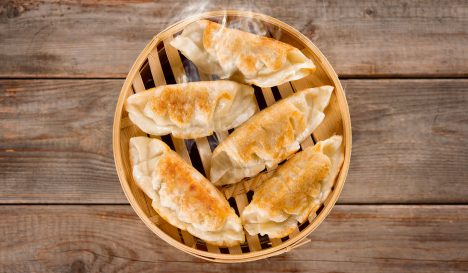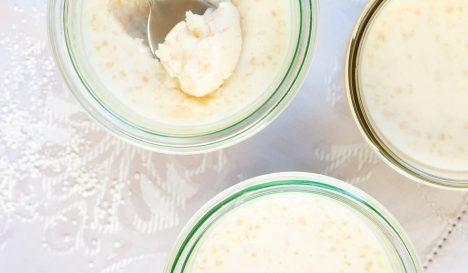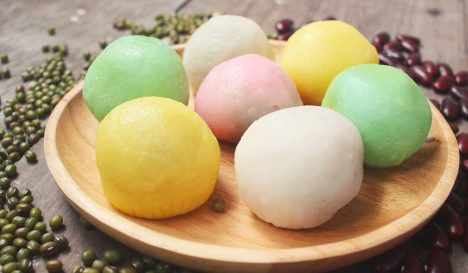Gulab jamun
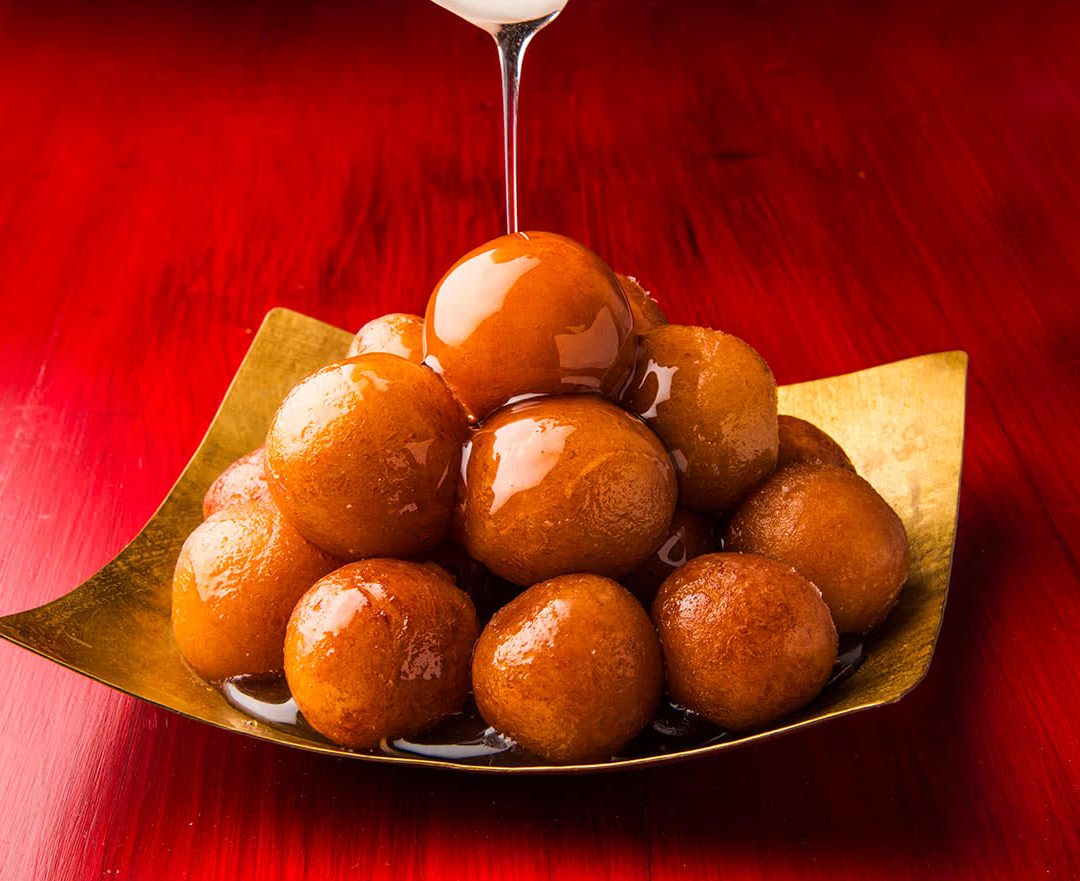
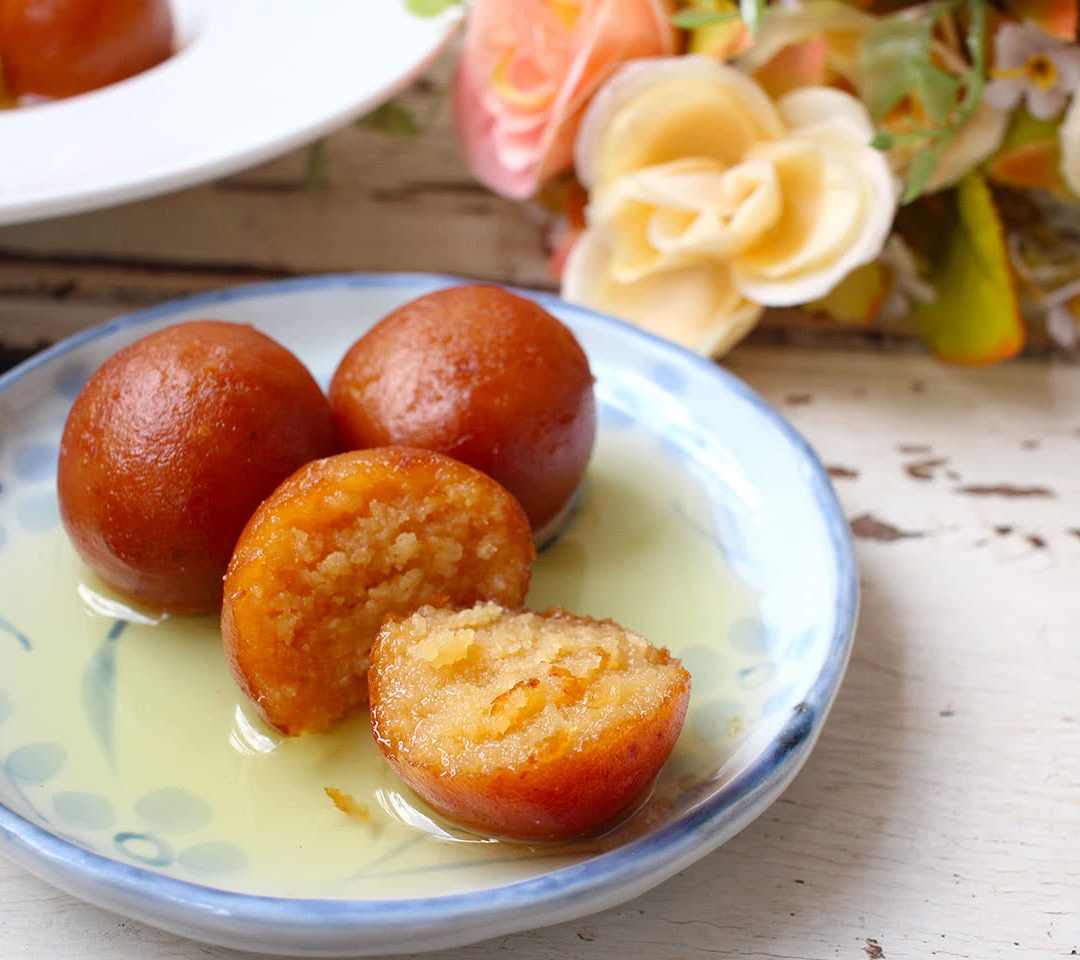
Gulab jamun
-
Kitchen Indian cuisine
-
Basis Dough / batter
-
Dish type Dessert
-
For who A sweet tooth
The dish
Gulab jamun (pronounced “goe-laab DJA-moen“) is a well-known and popular Indian dessert made of fried dough balls. A type of dumpling, gulab jamun is soaked in a sweet, sticky syrup. Gulab means ‘rose water’ so, as per tradition, the sugar syrup has a delicate rose flavour. A jamun is an Indian berry with a size and colour comparable to the dough balls, hence the name: Gulab jamun.
In the sixteenth century, during the reign of Babur, the first Great Mogul, North Indian kitchens underwent major changes. Chefs came from countries and regions far and wide (including Afghanistan and Persia) to demonstrate their skills, bringing new recipes and previously unknown ingredients. Over time, these have been incorporated into the Indian cooking repertoire.
The origin of gulab jamun lay in Persia and the Mediterranean and, thanks to the introduction of white wheat flour from Central Asia, could now also be made in India. Indian chefs used khoya, a solid milk ‘paste’ that was the result of milk simmering for hours on a low heat. Nowadays, chefs use the much more convenient dried milk powder to make the dough.
Gulab jamun is internationally popular and can be found on almost every Indian restaurant menu in the world.
Preparation
A sticky dough made of skimmed milk powder, wheat flour, baking soda, cardamom and whole cream is kneaded and turned by hand into smooth balls. The balls are fried in oil, at a moderate temperature, until they are golden brown. Swelling to double their size, the balls are then soaked for about 20 minutes in a warm syrup made from white sugar and rose water. The gulab jamuns can then be garnished with chocolate, ground coconut or chopped pistachios.
How to eat
Eat the gulab jamun warm, when they are at their softest and tastiest. A good gulab jamun will melt on your tongue, revealing its subtle raisin taste and spicy cardamom aroma.
Difference between gulab jamun and rasgulla
Gulab jamun is a sweet and rich dessert made from milk solids, combined with flour and cardamom. The mixture is formed into small balls, deep-fried until golden brown, and then soaked in a sugar syrup flavoured with rose water or saffron. Often served warm. Rasgulla, on the other hand, is a spongy and light dessert made from freshly curdled milk, creating chhena (paneer). The chhena is kneaded into soft balls, which are then boiled in that same sugar syrup. Served chilled, it makes a refreshing hot weather treat.
Try also
Asian cuisine has a wide variety of desserts. From the popular pisang goreng, which is made from deep fried banana or plantain to the slightly strange che chuoi, a sweet gelatinous soup made from beans and rice, there is something for every palate.

